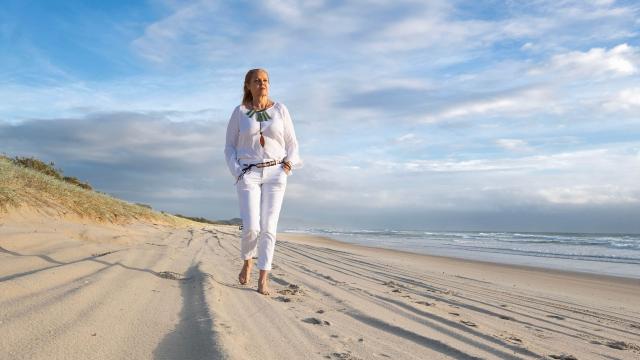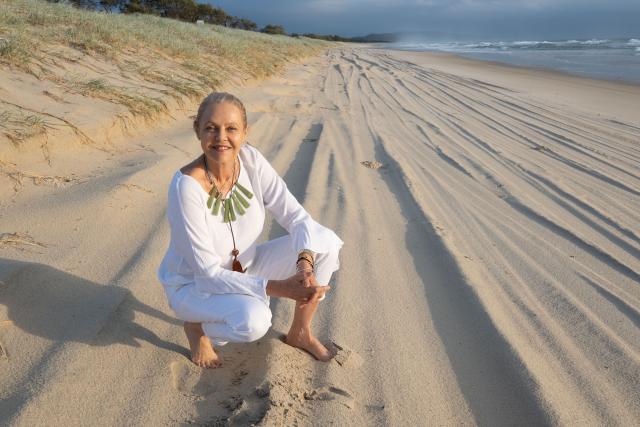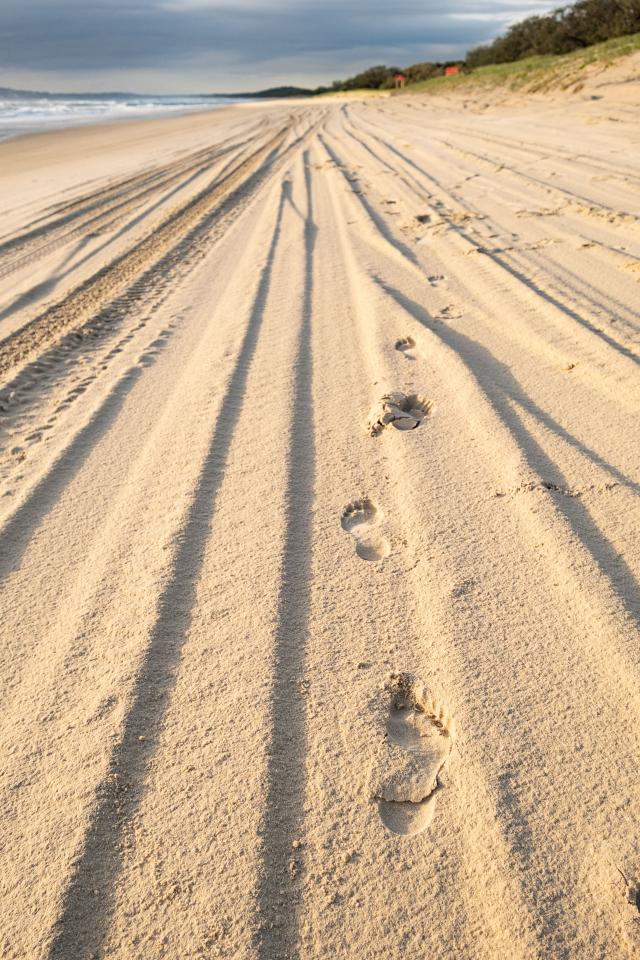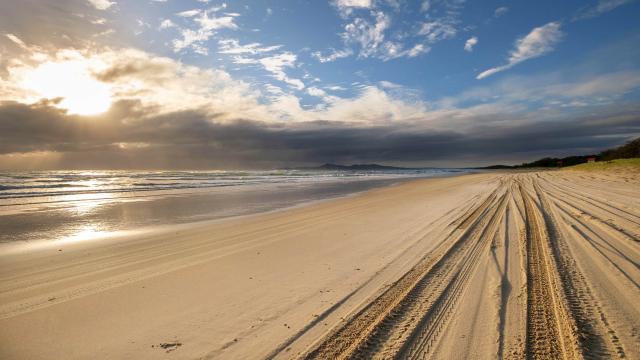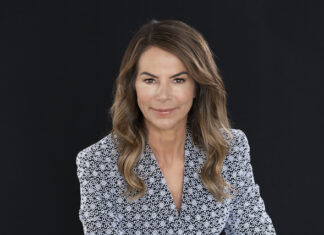On a hot and humid Sunday afternoon when everyone else in Noosa is relaxing, Noosa MP Sandy Bolton pads around her funky repurposed riverside home with a strap purse dangling from her neck as she prepares hors d’oeuvres.
In it, of course, the phone that never leaves her, not since her election as councillor in the 2014 de-amalgamated Noosa Council, nor since her election as the independent Member for Noosa in the 2017 state election. She knows that the key to delivering as an independent is to be the genuine voice of the people, and that means being available to listen, and then act, at all times.
But on this balmy afternoon it’s a reporter who is doing the listening at the home she shares with partner former lawn bowls champion Ian “Shoey” Schuback and assorted rescued dogs, cats and kangaroos, the location underlining the fact that when it comes to the issues facing the Noosa North Shore, Teewah and Cooloola, Sandy Bolton has serious skin in the game. Not only has she sat, in her role as MP, on the Teewah Cooloola Working Group, formed to identify issues and make recommendations to address them for a sustainable future, since its inception, but since becoming a resident and moving reluctantly to “the other side” – “I fell in love with the feel of the place and its sense of peace,” she says, “so you put up with the access issues and the mozzies” – she is acutely aware of the widely-felt concerns for the state of the amenity and the need to retain its unique qualities, the additional health, safety and traffic impacts that have increased since Covid, and that includes the ferry issue.
Sipping on a weak spritzer (90/10 in favour of the soda) she says: “Over the years there has been a lot of talk about possible solutions, such as a slip lane for residents and for essential services like carers for the elderly, pump-out trucks and so on. But you have to look at the bigger picture and what is the desired result? Are we trying to reduce the number of people crossing the river through permit reductions to alleviate the impacts and lines, or are we looking at it more broadly? There has to be a solution that works for all of our community, as well as visitors.
“The impact goes beyond just the North Shore. You’ve got Moorindil Street with residents unable to access their homes because of ferry queues to Poinciana Ave. When I’ve had to queue for two hours to get home I’ve realized I have to get a little tinnie! It made me think about situations of fire or flood. North Shore residents and visitors have to have a plan for both, and in an emergency it can’t include waiting in line for the ferry. Peak times used to be predictable according to season and tide, but Covid has changed that, with so many more people working from home who might suddenly decide midweek in Brisbane, we’re going camping or daytripping at Teewah! The recommendation of using permit reduction to iron out the peaks in demand needs to be thought through very carefully.”
Back in her office a few days later, Sandy pulls out a huge stack of manila folders and drops it on her desk. She says: “This is all the work in relation to Cooloola Recreation Area, going back to the first advocacy we did in 2018. These are the office records on Cooloola, including the work of the Teewah Cooloola Working Group and where they got to. In 2019 the group presented to [then] Environment Minister Enoch a number of recommendations largely based around management of numbers in the park. [The Group also made recommendations to Noosa Shire and Gympie Regional councils.] Many of these have been implemented, however progress has been frustratingly slow, and should not have been.”
“At that time, pre-Covid, you basically had four or five peak periods and it was felt that if we could take 20 percent off those peaks the overall numbers could be brought to a manageable level. The recreation area was more or less paying for itself – the revenue from permits covering the on-site management – so the recommendation included increased permit fees. In short, whatever percentage you reduced the numbers by, you’d have to increase the permit costs by the same.
“This area is the only one of its type in Queensland that still issues day permits, and it also has no limit on day tripper numbers. In the period since our recommendations camper numbers have been reduced to enhance both the resident and visitor experience and safety, but there’s still a lot of work to be done on the overall numbers.”
Unfortunately the Teewah Cooloola Working Group appears to be in hiatus. Sandy Bolton insists that it’s not dead, it’s just having a rest, but the facts are that the group, instigated in September 2018 by then Noosa mayor Tony Wellington and including representatives of both Noosa and Gympie councils, MPs for Noosa and Gympie, plus broad community representation, met nine times over 18 months while Wellington was mayor, the last of them in March, 2020. Since the 2020 local government elections, the group has met once in 22 months (in April 2021).
Of course, Covid lockdowns have played their part, but it’s also become apparent that there is waning interest from Gympie council and local MP Tony Perrett, although splinter groups like Keep Cooloola Cool have emerged to push for environmental protections. TCWG was by no means the first working group formed to protect the North Shore and Cooloola, but it was the one that showed the most potential for success in overcoming regional differences and bringing the tribes together with a plan.
Sandy Bolton still believes TCWG can play that role. “When the Working Group has its first meeting for the year we need to focus on outcomes from the work that’s already been done, but we also need to look at Native Title and the other issues that have become part of this. We need to incorporate all of these elements and develop a holistic picture.
“We need to look at the Queensland Parks and Wildlife Service (QPWS) numbers, work out the patterns and whether reducing permits by 20 percent will be enough to successfully manage the peaks. But that doesn’t address the cohort who are determined to spoil the Teewah/Cooloola experience for everyone and for whom a fine of $500 isn’t going to work. And we have to solve this in order to foster the next generation of Noosa residents who want to enjoy and protect that experience, and that experience doesn’t include hooning and creating fear.”
Asked to prioritize an action plan for the North Shore, Sandy says: “I can’t place them in order of importance, because they are all equally important, but these are the key issues that must be actioned. We have to take control of visitor numbers through peak time reductions of permits. We have to develop an integrated system between Queensland Police Service and QPWS so we can identify repeat offenders and keep them out, and we need to monitor the results and the community impact of any changes that are made. In addition, the outcomes from the recent Department of Environment and Science sustainability survey should not end there, and this is an important task for the CTWG to follow up on.”
According to a DES spokesperson, QPWS has been using a number plate recognition system for the purpose of checking vehicle access permits in the Cooloola Recreation Area (as well as Bribie Island) for some time, but the system is not integrated with QPS or any other external system.
The spokesperson told Noosa Today: “The QPWS does not currently ban individual vehicles or drivers, however, rangers can manually list registration numbers for notification if the vehicle is in the recreation area. This is done to ensure all required permits are obtained by visitors. The QPWS and QPS work in collaboration regularly, but there is no integration of compliance systems. The QPWS allow police access to number plate recognition system data in appropriate circumstances, such as by formal request to assist with an ongoing investigation and during coordination of disaster management operations.”
Sandy Bolton wanders along an unusually lonely Teewah Beach just after dawn, savouring the solitude, remembering when her kids were little, bringing them over to camp or for picnics, or driving them up the back roads of Cooloola in her little 4WD for sporting events up north. She stops to pick up a discarded single use plastic bottle from deep in a tyre track, and murmurs a phrase that is becoming a mantra: “We need to ensure this incredible part of our home is here for the kids of today, and of tomorrow. And we need to get a move on!”
If anyone can do that, Sandy can.

